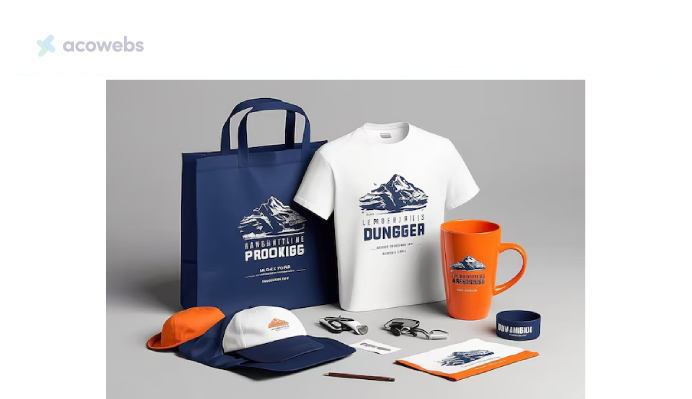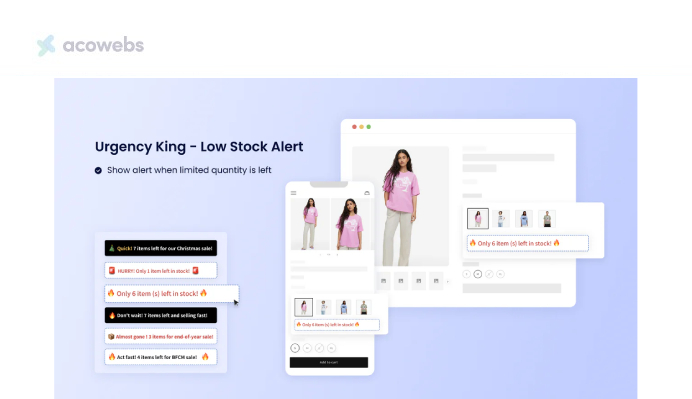eCommerce merchandisers perform several chores to maintain the attractiveness and functionality of their online shops, much like a committed chef painstakingly prepares, arranges, and refreshes their menu to deliver the greatest dining experience.
The art and science of maximizing product arrangement, presentation, and promotion to improve the online purchasing experience is known as eCommerce merchandising.
Driving sales is the ultimate objective of eCommerce merchandising, which entails making small, frequent changes to the online store. This includes adding fresh customer reviews prominently on product pages, updating product listings with crisp photos and thorough descriptions, and evaluating website visitor data to assess performance.
eCommerce companies need to be aware of how customer tastes are changing and use data to guide their business decisions. For instance, they might modify the product description and incorporate pertinent keywords into the product title if a certain landing page exhibits a low conversion rate.
The article will discuss optimizing product presentation, using data-driven decisions, and making frequent updates in eCommerce merchandising to enhance the online shopping experience, drive sales, and reduce cart abandonment.
What Is eCommerce Merchandising?

eCommerce merchandising is the art of carefully arranging one’s products in an online store to gain maximum sales and improve user experience. This comprises selection, location, pricing, and presentation techniques that will give reasons for consumers to buy goods.
For example, an online fashion company may create attractive product pages, detailed descriptions, and high-quality photographs. It may also give recommendations based on the user’s behavior in terms of browsing.
In contrast, data analytics learns customer preferences and gives a store opportunities for improving search functionality and product categorization through effective eCommerce merchandising.
For instance, using data to highlight the new arrivals and bestsellers on its homepage helps a bookstore in making it easier for its customers to find popular books.
In addition, upsell and cross-sell programs are in place to boost average order value. Take this scenario, right after a customer has placed a laptop in their shopping cart, a tech store might recommend purchasing related accessories, like a mouse or a case for the laptop, on the product page or at check-out.
This is a smooth and pleasurable online buying experience, almost as individualized as one would get from a store. This consists of showing one consistent brand identity, making it easy to navigate, and putting up practical purchasing options.
A seller of home decor might break up their products into thoughtfully chosen collections, such as “Modern Living” or “Cozy Bedrooms,” to help clientele find items that appeal to personal taste.
Ultimately, successful eCommerce merchandising ensures that relevant products are featured to the customers compellingly and intuitively to complete their purchases, satisfied.
Techniques for Outstanding eCommerce Merchandising
Achieving excellence in eCommerce merchandising requires a strategic approach to product presentation, user experience, and customer engagement. Here are key techniques, based on the provided information, to excel in eCommerce merchandising:
1. Curation and Management of Products
To comprehend the preferences and purchasing patterns of your target audience, conduct in-depth market research. To predict changes in demand, keep an eye on seasonal patterns and media consumption patterns.
For instance, eCommerce businesses had to swiftly stock and advertise fidget toys due to a recent trend sparked by TikTok that witnessed a spike in demand for them.
To increase your products’ visibility in search results, update their descriptions frequently with pertinent SEO keywords. Refresh product images to keep the catalog visually appealing and accurate. Ensure items are correctly indexed in the site search for easy discoverability.
For instance, an online fashion retailer updating its product metadata to include keywords related to “summer dresses” and updating images before the summer season can attract more traffic and increase sales.
You can use various keyword search tools such as Google Keyword Planner. It is a tool within Google Ads, that helps identify relevant keywords for your business. You enter a keyword or website, and it provides data on search volumes, keyword suggestions, and competition levels.

2. Enhancing Trustworthiness by Social Evidence
Letting your customers know that you care about what they think will significantly contribute to your brand’s credibility. Incentives, such as discounts on their next purchase, can be a great way to motivate customers to write reviews.
Not only do these reviews give invaluable feedback, but they also help potential buyers know what real customers have gone through with your products or services. Especially in the case of diverse reviews, they tend to build a realistic image of your products or services.
It is necessary to show the balance between positive and negative reviews, as this will help in preserving authenticity and build trust. People tend to believe more in the brand when it shows all the feedback upfront and does not manipulate or hide it.
They know that no product can be ideal for everyone; hence, such a balanced approach can enhance credibility and reliability. New customers will be more likely to buy.

Testimonials and user-generated content can also be used. They are directly related to establishing trust and credibility. By placing written and video testimonials directly on the website, it becomes easier to get first-hand accounts of satisfaction and success stories from real users.
It is a very personal effect that may work better than just general marketing messages. Moreover, the very act of reposting UGC on your official social media channels maximizes this effect by showing that your brand values and recognizes its customers.
UGC is social proof that real customers are enjoying and endorsing your products. This not only builds credibility but also creates a community around your brand.
Trust badges also come in handy. Whether in the form of photos, videos, or written posts, UGC is social proof that real people are enjoying and promoting your products. This not only enhances credibility with the consumer but will help a sense of community around your brand.
This can be done by displaying trust badges, such as SSL certificates, security seals, or even industry-specific certifications, to reassure customers that your website is safe. These badges help customers believe that their personal and financial information is safe, hence significantly reducing cart abandonment.
Other trust badges involve affiliations with popular and respected organizations to give more value to the credibility of your brand.
Another effective technique that relates to creating urgency would be low-stock alerts. These warnings inform customers that the item is almost out of stock to get them to act fast if they want to buy the item.

It’s exploiting the principle of scarcity from psychology, where people perceive a good as more desirable when it is scarce.
Putting trust badges and low-stock alerts together simply reassures the customer about their safety while at the same time encouraging them to buy fast, thus driving conversions and trust in the brand.
3. Utilizing Product Videos
Ensure to create different types of videos, such as demos, tutorials, 360-degree views, and customer testimonials, to give detailed insights into products. These videos can help customers better understand how products work, their features, and their benefits.
Use engaging video content to showcase the key features, benefits, and real-life applications of products. For example, a campaign by a tech gadget store can use tutorial videos to demonstrate the features of a new smart home device, significantly boosting customer interest and sales.
4. Optimal Site-Search Techniques
Today’s search engines accommodate several types of complexities, whether it is misspellings, synonyms, or natural language queries, to make sure that users extract their information easily. Certain algorithms are developed to identify and correct typos and misspellings.
This allows the user to find the information they need even if they have misspelled something while typing.
For example, “smartphne” still gives results for “smartphone.” Another important feature is the recognition of synonyms; understanding these allows the search engine to refer to a single entity by several terminologies users might use in describing it.
For example, “shoes” may mean “footwear” or even “sneakers.” Another point is that natural language queries need algorithms able to deal with context and intent, the whole sentence or question, and in turn return relevant results.
This becomes particularly true for queries like “What are the best budget laptops for students?” where it has to interpret what the user’s needs really are.
Semantic search technology goes a step further in refining the results from a search with an improved experience where it is more about understanding the intent and context of the user rather than keyword matching.
Semantic search will deal with analyzing the meaning of a query whereby it knows how to deal with a search for “apple” based on contextual information or user behavior, whether it is related to the fruit or the technology company. It finds what is more related to the user’s intent, therefore giving more accurate and relevant results.
Real-time autocomplete and dynamic search suggestions will be crucial in guiding users to a relevant product or category. Autocomplete suggests instant responses at the instant users type their queries, helping them find what they need much more quickly.
For example, when one types the word “wireless,” it could give suggestions such as “wireless headphones” or “wireless chargers.” Similarly, search suggestions based on popular or related terms enable a user to limit their search to only the relevant choices, hence making the search much more efficient.
Filters and faceted search allow users to further narrow down results based on different attributes, ensuring high precision in the search. Filters offer additional ways to restrict results by category, price, brand, size, or color.
For instance, the “dress” search can be filtered on “size,” “color,” and “price range” to get back the most suitable results. In faceted search, there are multiple filtering dimensions; users can select several attributes such as “brand,” “style,” “material,” and “price” to filter their search down to the most relevant results.
Personalization of search significantly enhances user experience by fine-tuning the search results based on user behavior and choices. Search engines offer different products that might be of interest to a user based on his past browsing history and purchase pattern.
If a user frequently searches for technology gadgets, then they will find technology products at the top of their search results. It tends to drive more conversion and user satisfaction, making search more relevant and engaging.
5. Creating a Compelling Brand Story
You should begin with the development of a narrative that defines your business regarding its origin, the values it holds, and what it stands for. This story should clearly define why the company was formed, its guiding principles, and its long-term goals.
It is through the articulation of these elements that you’re going to create a basis that allows you to establish a strong emotional connection with your customers. An effective brand story allows your audience to connect, engendering loyalty and trust by pointing out what it is that sets your business apart and what it stands for.
Visual and verbal consistency plays a big role in creating an attractive brand story. Having the values shine through in any brand and stand out to its target audience, it is considered very important to have its visual identity just right.
Visual identity refers to those visual elements created to apply across all brand mediums, defining your brand, such as logos, color palettes, and design styles. Of equal importance is verbal consistency, which means a tone of voice used throughout all written material, be it product descriptions, advertisements, or even social media posts.
This visual and verbal consistency strengthens the identity of your brand and allows for all interactions with your audience to align with your brand message and values.
Measuring eCommerce Merchandising Success
Success in eCommerce merchandising can be assessed by the effectiveness of a website or online store toward the management of its products and driving sales. There are some key metrics and strategies that help in measurement.
1. Conversion Rate
This may be the most important measure, indicating the percentage of visitors that convert into buyers. If your conversion rate is extremely high, it is indicative that your merchandising strategy—product placement, pricing, and promotion—works perfectly with your audience.
By researching user behavior on your website, you can identify and address any hurdles, further enhancing the conversion rate and overall user experience.
2. AOV (Average Order Value)
This will tell how much, on average, is spent per transaction. Cross-selling and upselling are techniques that would increase AOV by the recommendation of complementary products or making offers in bundles.
AOV helps in understanding how well your merchandising strategy encourages customers to spend more.

3. CTR (Click-Through Rate)
It is a measure of how frequently people are clicking your product links or sponsored ads. A high CTR would, therefore, indicate the conditions wherein product listings and promotional banners look attractive and relevant.
Boosting your CTR requires making sure that you have high-quality and riveting product images and descriptions.
4. Sales by Product Category
Referring to your sales data, broken down by product category, you will be able to make out those categories that are performing better than others. That knowledge will enable you to manage your resources more effectively and concentrate on pushing the high-performing categories.
This information assists with inventory management and in planning future product launches.
5. Customer Retention Rate
This measures the ability to retain customers over time. If it is high, most likely, your merchandising efforts are creating a positive shopping experience and developing brand loyalty. Strategies for improving retention include personalization and loyalty programs.
6. Return on Investment
ROI refers to the profitability measurement of merchandising efforts against its cost. It considers the revenues created from merchandising activity against what it costs to run the effort.
High ROI means that your merchandising strategies are cost-effective and produce a high degree of return.
7. Product Turnover Rate
It is the speed at which the stock is sold and then replaced. The high rate of turnover is indicative of proper merchandising. In contrast, a low rate of inventory turnover shows that there might be problems with the product’s appeal or its pricing system.
Refresh your stock regularly so that your turnover is in good health by loading seasonal items.
8. Customer Reviews/Feedback
It gives qualitative insights into how your merchandising strategy is working. Monitoring customer reviews and feedback normally gives positive feedback, which reflects successful merchandising, while bad reviews will show areas for improvement.
Conclusion
eCommerce merchandising is the dynamic art of merging art and science with rigorously planned product arrangement, presentation, and promotion to drive sales and create a better online shopping experience.
Through optimal site-search techniques, engaging brand storytelling, and personalized user experiences, businesses are helped to create an engaging and intuitive shopping environment.
This includes advanced search algorithms, real-time autocomplete, filters, faceted search, and personalization recommendations that facilitate ease in finding and buying what is required.
Additionally, it ensures visual and verbal consistency that ensures a compelling brand story that resonates with customers. Incorporating customer reviews and feedback fosters trust and loyalty.
This can be measured with some key metrics: conversion rate, average order value, click-through rate, sales by product category, customer retention rate, ROI, and product turnover rate.
When an eCommerce company regularly improves its processes based on various discoveries, it guarantees customer happiness and repeat business while offering a straightforward and pleasurable shopping experience.
Acowebs are the developers of Woocommerce Custom Product Addons which is a optimized, lightweight, and fruitful plugin that is simply the best to add extra product options using its custom form builder easily. WooCommerce custom fields also comes with drag and drop form builder, 22+ field types and custom price formula.












 Login
Login
 Cart
Cart







